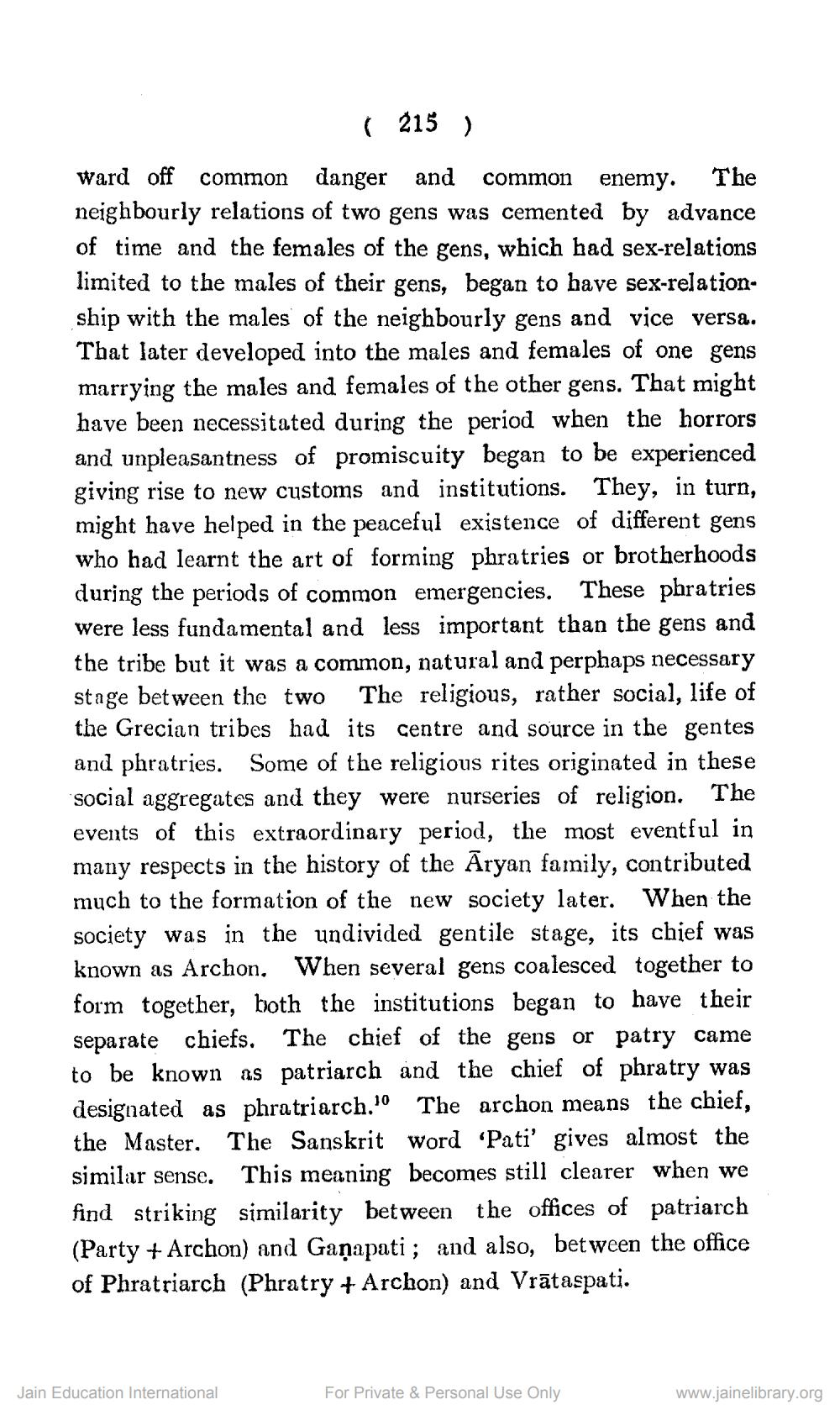________________
( 215 ) ward off common danger and common enemy. The neighbourly relations of two gens was cemented by advance of time and the females of the gens, which had sex-relations limited to the males of their gens, began to have sex-relationship with the males of the neighbourly gens and vice versa. That later developed into the males and females of one gens marrying the males and females of the other gens. That might have been necessitated during the period when the horrors and unpleasantness of promiscuity began to be experienced giving rise to new customs and institutions. They, in turn, might have helped in the peaceful existence of different gens who had learnt the art of forming phratries or brotherhoods during the periods of common emergencies. These phratries were less fundamental and less important than the gens and the tribe but it was a common, natural and perphaps necessary stage between the two The religious, rather social, life of the Grecian tribes had its centre and source in the gentes and phratries. Some of the religious rites originated in these social aggregates and they were nurseries of religion. The events of this extraordinary period, the most eventful in many respects in the history of the Aryan family, contributed much to the formation of the new society later. When the society was in the undivided gentile stage, its chief was known as Archon, When several gens coalesced together to form together, both the institutions began to have their separate chiefs. The chief of the gens or patry came to be known as patriarch and the chief of phratry was designated as phratriarch. The archon means the chief, the Master. The Sanskrit word 'Pati' gives almost the similar sense. This meaning becomes still clearer when we find striking similarity between the offices of patriarch (Party + Archon) and Ganapati ; and also, between the office of Phratriarch (Phratry + Archon) and Vrātaspati.
Jain Education International
For Private & Personal Use Only
www.jainelibrary.org




